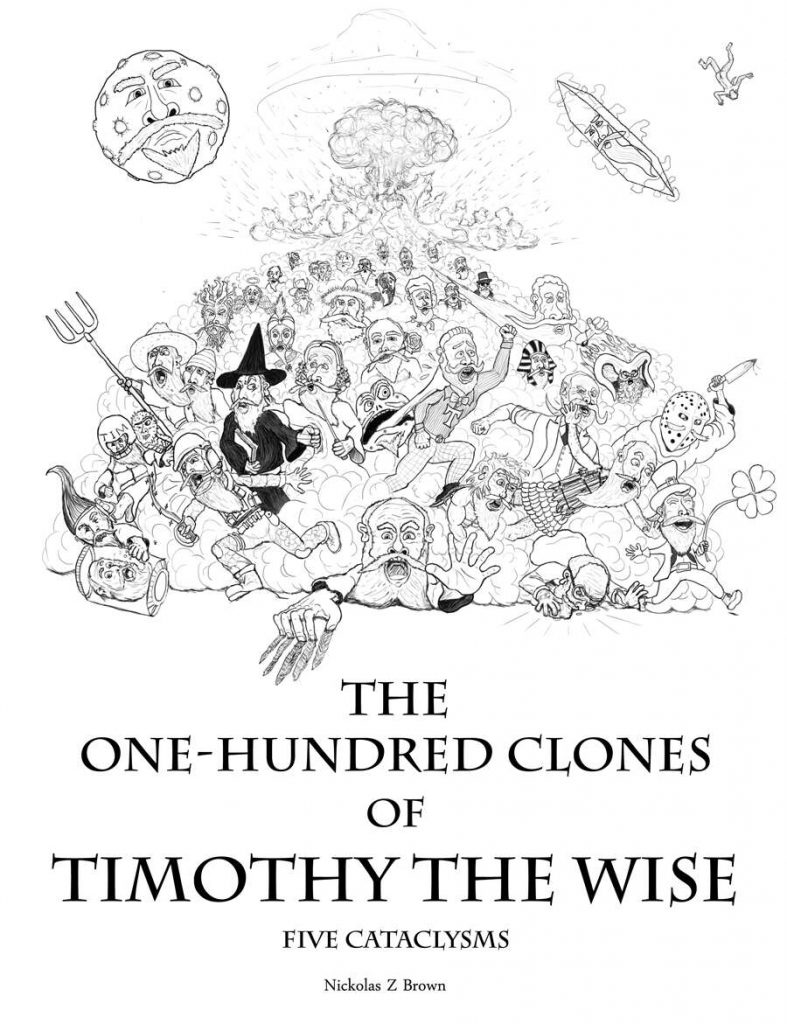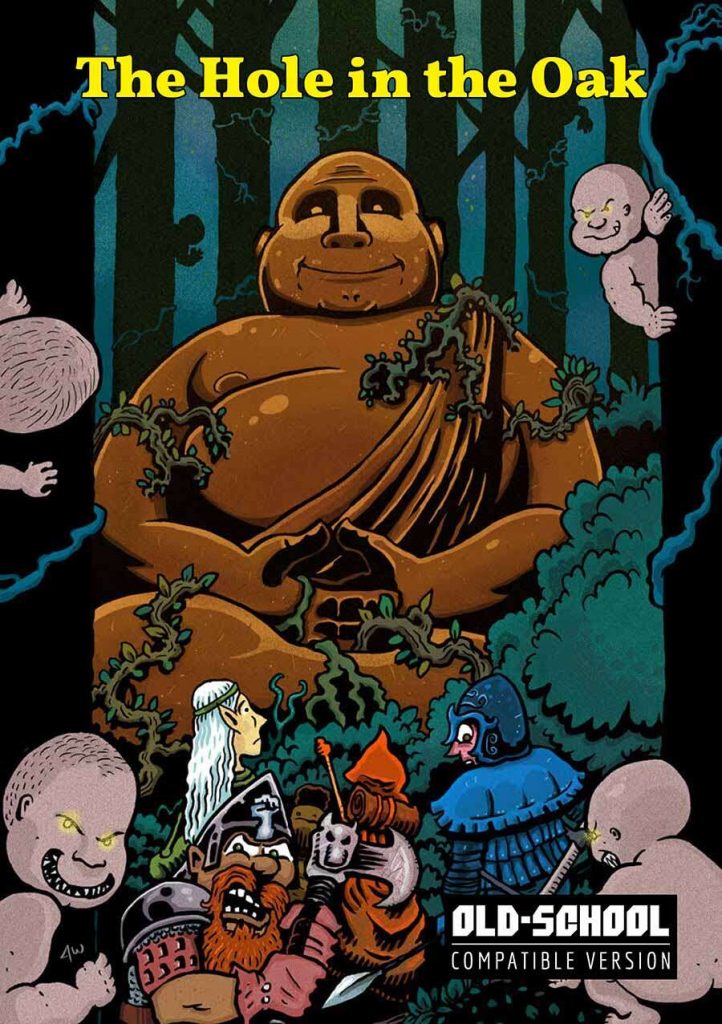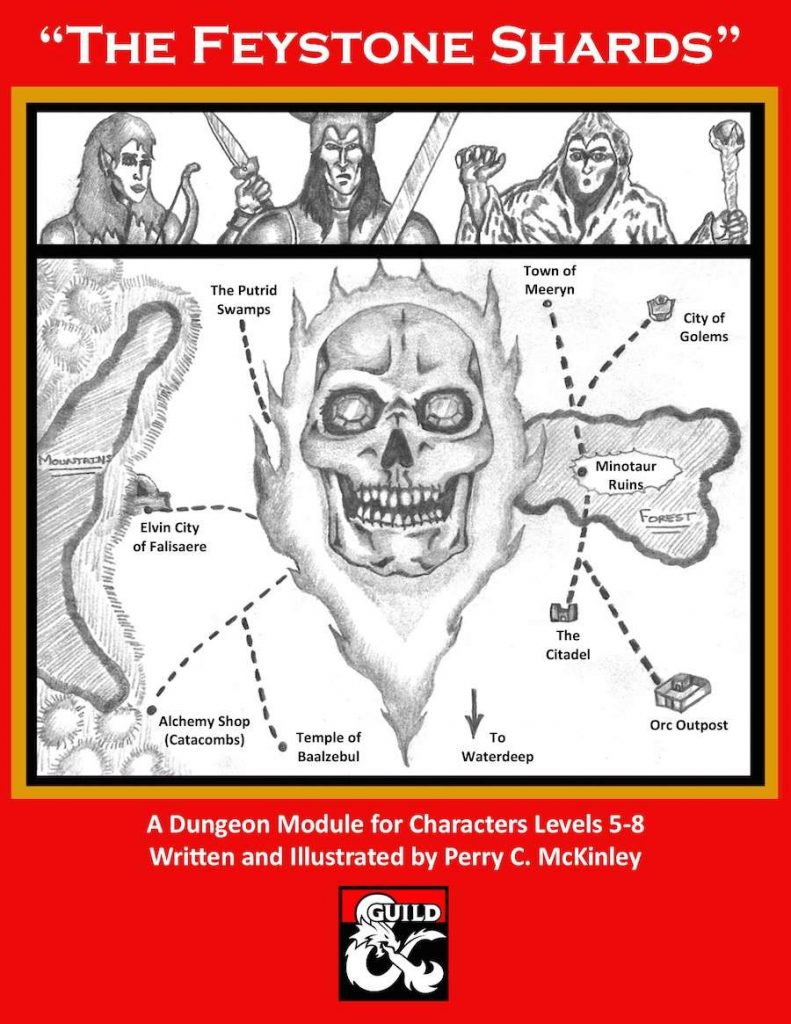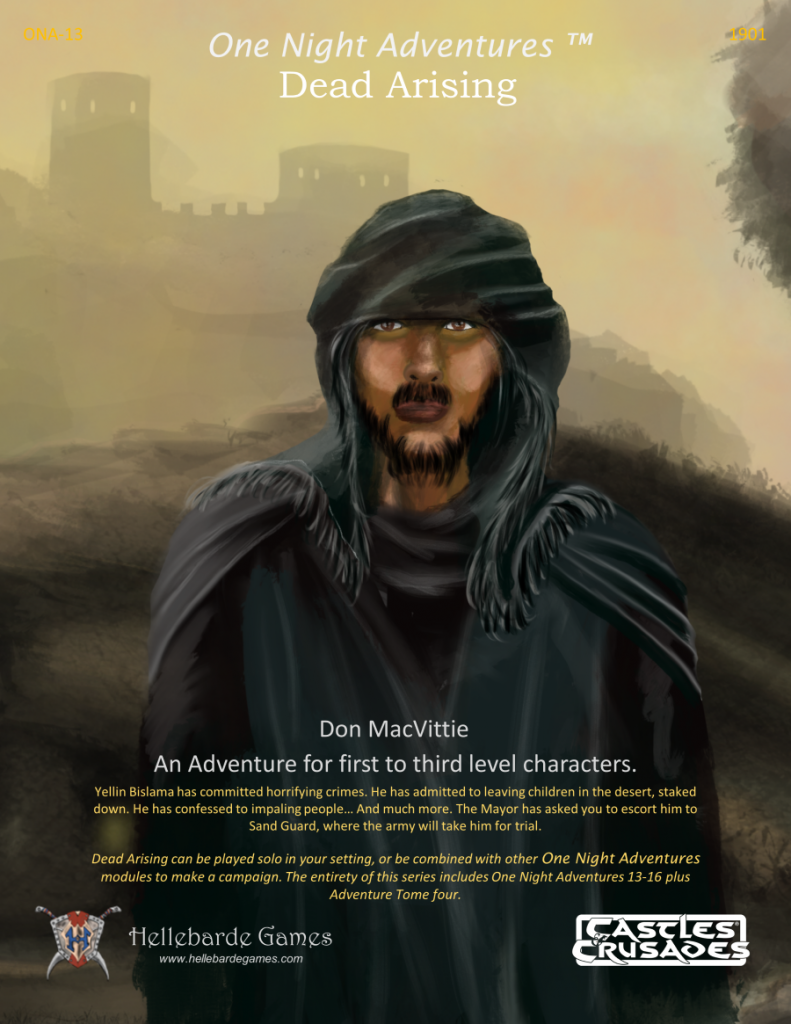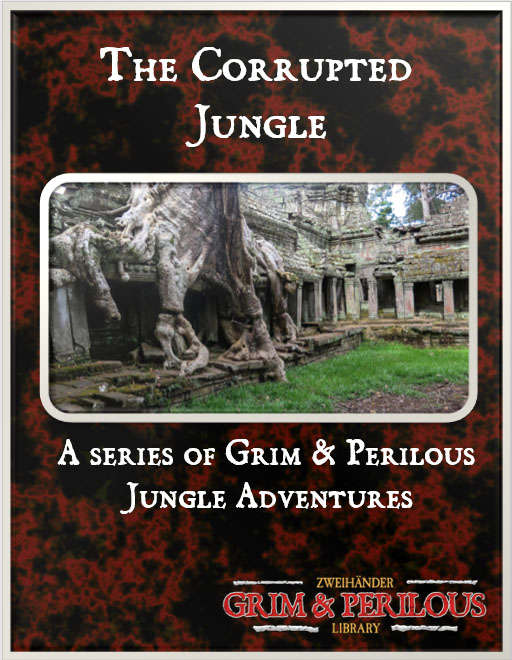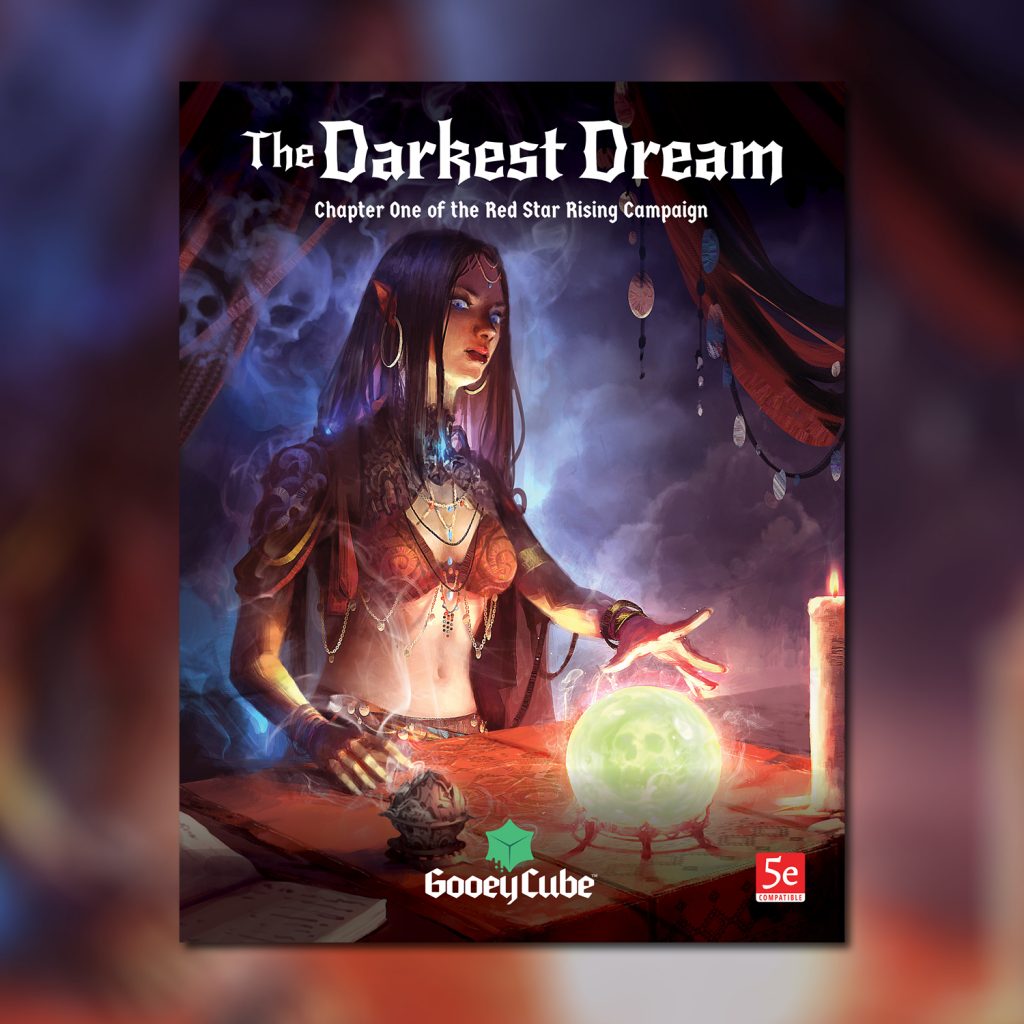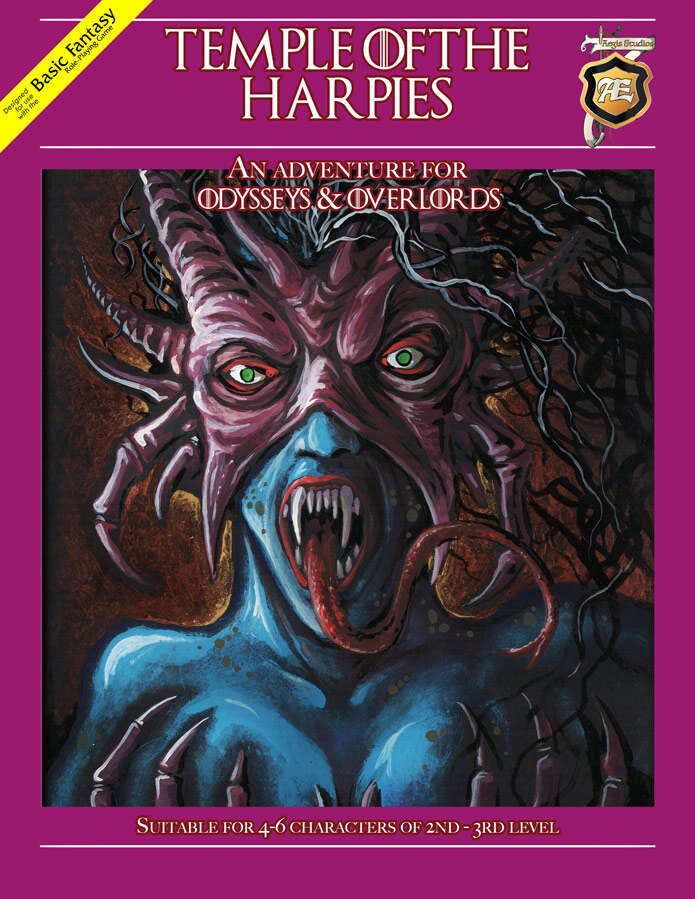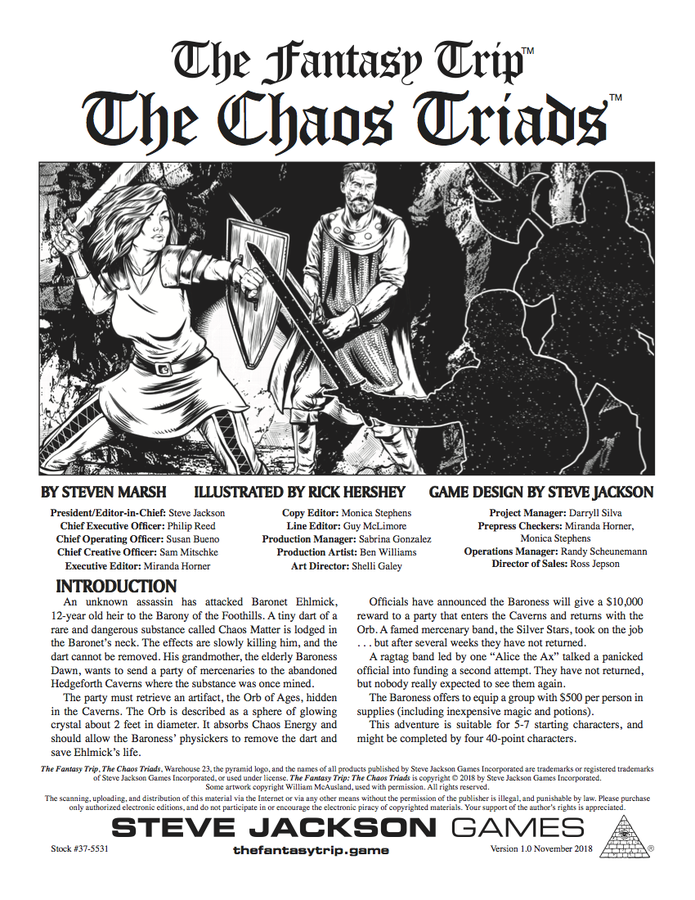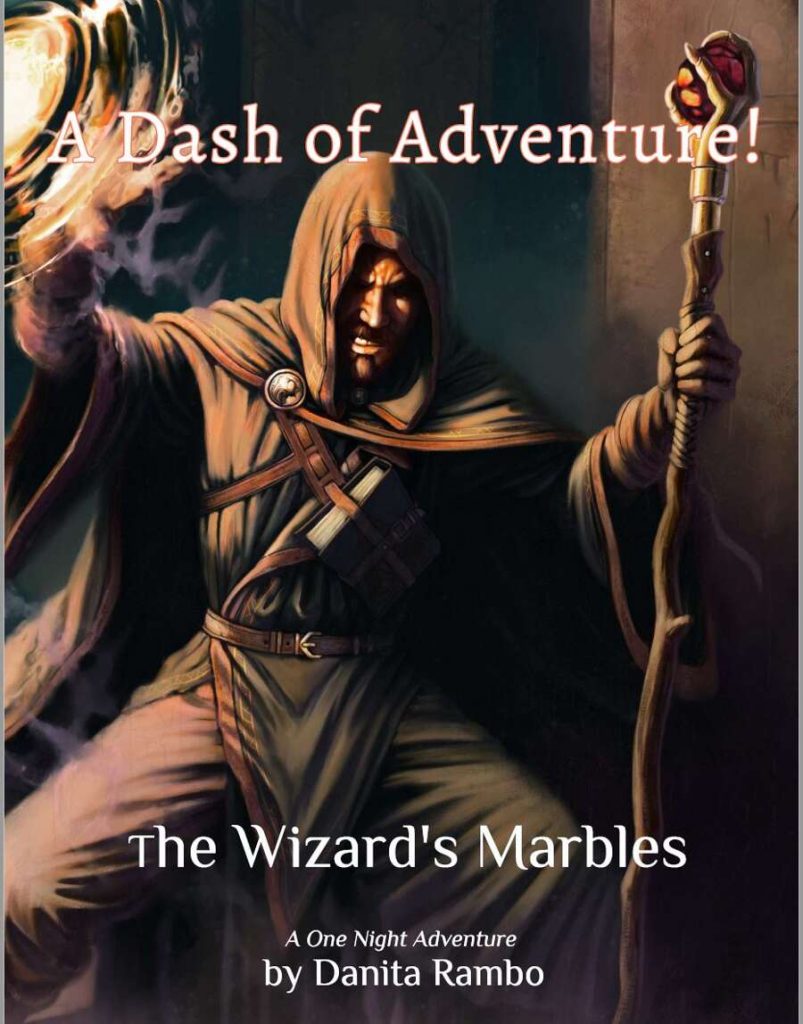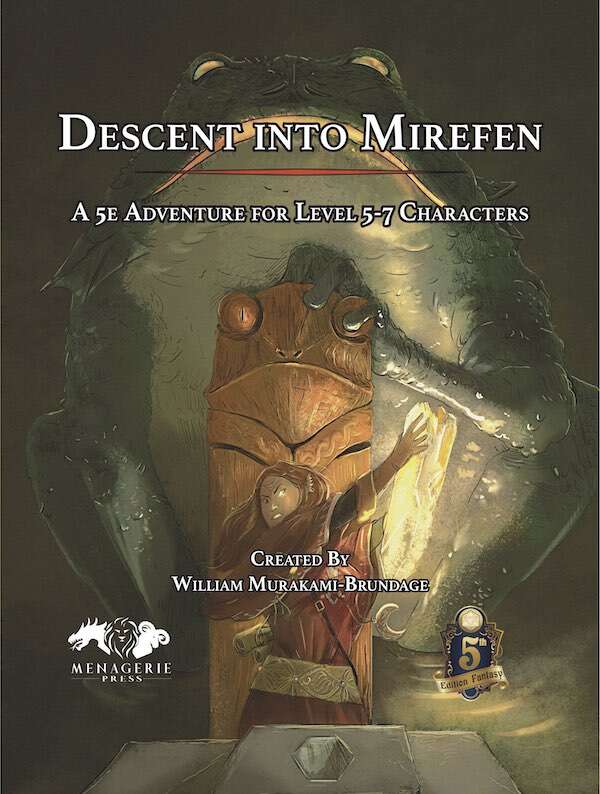
By William Murakami-Brundage Menagerie Press 5e Levels 5-7
Within Mirefen’s bog is a ruined temple. This edifice is now home to a tribe of toad folk, who have defiled the holy site with strange effigies to their squat, bestial gods. Can the adventurers wrest magic and treasure from the swamp?
This 44 page adventure details a not-bullywug tribe in some swamp ruins and is a kind of base assault on a 35-ish room area. They’ve got a magic gem and someone with ill-intent wants it. The intent, outline, and framing of this are good with the execution sucking. The usual poor read-aloud and trivia DM text is to blame. There are some nits also but, this ain’t no railroad.
Toak people in a swamp live in some ruins. In the ruins is also a magic gem that they like a lot. In town you meet a drunk guy in a bar who is supposed to guide a diplomatic mission to the toad-people pretty soon, when the mission arrives in a day or so. The mission wants to bring the toad-people under their allied umbrella and get the gem. Their from a god of strength and war, all Might Makes Right. The guide is LE and it’s pretty strongly implied the mission is also. It’s all “no hesitation in destroying people who disrespect them”, as well as the tribe etc.
The tone is interesting for 5e. Usually it’ raving maniacal evil cultists and the like. You can negotiate with the drunk guy and join up with the mission. And while they have evil alignment it’s not really displayed much more than any PC party would be. “Yeah, we’re going to these ruins full of bullwugs to get a magic gem … they better not try and stop us.” It’s a much better approach and it open up the adventure to a lot more possibilities.
And that’s what I mean by the framing, outline, and intent of the adventure. It takes a more neutral approach to the design. That drunk guy? The LE guide? You can pickpocket him. You can break in to his room at night. You can join up with him, either for realisies or as a deception. The high paladin that leads the mission? Essentially the same thing. She’ll bring the party along as she negotiates … and potentially slaughters, the toad people. And they might even be good allies that don’t backstab the party if the bullywugs ambush the mission. Or you can try and beat the mission to the ruins. And then you could try and fool the toad-people. Open. Ended. It is SO much more fucking refreshing to see an adventure written this way. There are suggestions on how to handle common things that might happen, the various situations, and that’s exactly what an adventure should do: support the DM
So, an adventure written in an open-ended way that doesn’t force the party down a narrow path. Great! There’s even a kind of reaction matrix for the village on what they do when folks attack.
There could be another table, I think, noting day/night cycle movements and so on, to help support a stakeout and stealth mission, but I’ll take what I can.
On the downside, well, there’s a lot.
Most importantly, the designer doesn’t know how to write an encounter decently. Read-aloud, while generally the correct length (thank Vecna …) is the same boring generic stuff that appears in every adventure. It’s not evocative at all. Although, interesting enough, each major area (the swamp, the ruins, the dungeon) has a little section that describes conditions and those ARE evocative. Rank sweat, herbal smoke and old ale. Yum!
DM text also has the usual issues. It’s conversational, writing in a style that is more at home in a novelization (without the purple prose) then it is to what the DM text should be: a reference document. As always, this makes scanning for information hard. There’s also a substantial number of suggested skill checks that are essentially meaningless to the adventure. “Make a DC 15 to figure out this meaningless trivia!”
I might note also that I mentioned a base assault in the intro paragraph. There’s not much weird in this, or things to play with, but there is a lot of combat. It’s not entirely devoid of more interesting options, there’s an alter here or there, but it generally restricts itself to “boring old base” more than crumbling ruins to explore and get in trouble with. Of course, stealth, combat, and talking to the toad-people are all included, but some other things would have been good idea. In particular, a more complex map, for better sneaking/pushing ruins over on people.
The “evil” mission is also a little generic. The members don’t really ge personalities or quirks at all. A few of those, even if just for the leadership, would have made a roleplay with them as allies more interesting. Imagine hooking up with them in town and watching their movements. That’s all for the DM.
And it’s gone ape-fucking shit with the name. Sha Halthas, Mirefen, Shigguk village, Dhrnu alliance, Dannt and Besharas. At least it not that 20-sylabyl Forgotten Realms shit or Venger’s can’t-hav’e-to’o-man’y-apostriphe’s. Seriously, make the adventure approachable.
Finally, just some weird shit left out. The starting town is known for its fine almost-magical horsies that they sell. But there are no horsie details. Uncool dude. There’s also a potential wandering encounter with a black dragon, flying overhead and not fucking with the party unless they fuck with it. My OSR mind immediatly went to “Fuck that magic gem. Let’s follow it to the lair! Dragon Hoard!” Ok, so that last one is not really related to the adventure.
If the designer can get their writing game pumped up then maybe future projects will be worthwhile. It’s gonna take a lot of a delete key, though, and some agonzining writing.
This is $10 at DriveThru. The preview is ten pages. Good try, but it doesn’t actually show you any of the encounter writing. A decent preview should show some of that. The ninth page does show some of that “atmosphere” text block that I think is a little better than most of the writing.
https://www.drivethrurpg.com/product/281980/Descent-into-Mirefen?1892600

